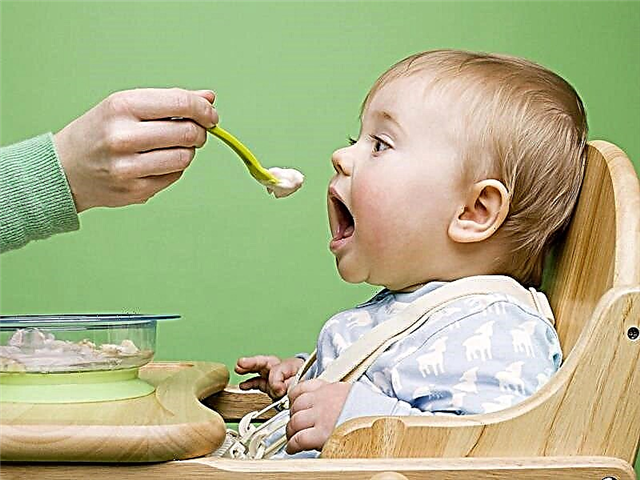Inflammatory changes in the heart in children are the most formidable complication of infectious pathology. Unfortunately, it is very difficult to treat. Infective endocarditis in children is a disease characterized by inflammatory changes in the inner lining of the heart - the endocardium.
Recently, endocarditis has become a common occurrence among children. Perhaps this is due to the more frequent birth of babies with heart defects. Also, cardiac surgery does not stand still. The use of intracardiac catheters and prostheses carries with it negative complications in the form of endocarditis.
Our article will allow you to understand the causes, symptoms, and most importantly, the treatment of this complex childhood ailment.
The causes of infective endocarditis
The main cause of the appearance of inflammatory changes in the endocardium is bacteria, of which there are countless numbers in the world.
The most common and tropic (having a disposition) bacteria to the heart are streptococci.
 In 65% of cases, infective endocarditis is caused by streptococci.
In 65% of cases, infective endocarditis is caused by streptococci.
Streptococcus is a globular bacteria that is not visible to the eye. She can normally live in a child's body in a certain amount. When the immune system weakens (SARS, sore throat, or scarlet fever), streptococcus gains strength and begins to multiply. The products of his vital activity begin to harm, including the endocardium. Streptococcus loves to live in the mouth, bladder, intestines.
In second place is the bacterium Staphylococcus aureus. Such a beautiful name was given to him due to the fact that when bacteriological sowing, he gives a golden color. In 25% of cases, it causes endocarditis. It is for the better, since staphylococcus aureus is more aggressive. It can lead to the destruction of heart valves, which will further lead to prosthetics.
Also, infective endocarditis in 5% of cases can cause fungal infections.
Endocarditis in children, as a rule, does not develop in a completely healthy child. There should always be a persistent infection in the body, which is activated when the factors of the immune system are weakened (ARVI, tooth extraction, caries, infections of the genitourinary system). Up to 2 years old, endocarditis develops in children, as a rule, against the background of congenital heart defects.
The most common vices
- Fallot's tetrad;
- open arterial duct;
- rheumatic heart disease;
- insufficiency of the aortic valve;
- defect of the interventricular septum.
Infective endocarditis can develop after surgical correction of congenital heart defects, especially on prosthetic valves.
A little about the development mechanism
Streptococcus or staphylococcus, increasing in quantitative ratio, settles on the endocardium. The process includes the fibrinolytic system (a system that regulates blood clotting).

Hence, small "lumps" of platelets and fibrin appear - vegetation. Their size begins to grow and leads to the destruction of the inner lining of the heart.
Endocarditis mostly affects the valves of the heart - mitral and aortic, as they line them. This leads to the development of their failure. With inadequate treatment in the future, there is a high risk of developing failure and the entire cardiac system.
Classification
By the background of occurrence:
- primary. Develops in a healthy heart;
- secondary. It occurs against the background of congenital heart defects or on prosthetic valves.
By the time of occurrence:
- congenital... Typically, maternal infections harm the heart of the fetus;
- acquired.
By the duration of the process:
- acute (duration of the disease up to 6 weeks);
- subacute;
- chronic (more than 6 months).
By form:
- typical the form;
- erased (implicit) form;
- atypical (uncharacteristic) form.
This classification makes it possible for the doctor to clearly formulate the diagnosis, the cause of the disease, and hence correctly prescribe the treatment regimen.
Infective endocarditis symptoms
Common infectious symptoms
Increase in body temperature to 38 - 38.5 degrees. The nature of the fever may be repetitive, or the temperature may remain high for several days. Moreover, taking antipyretic drugs has a short-lived effect.
 A feature of this fever is chills and profuse sweating, especially at night.
A feature of this fever is chills and profuse sweating, especially at night.
The child may develop weakness, fatigue. During normal play, the baby can sit down to rest, although previously he could play for hours without interruption.
The child may refuse to eat, lose weight.
In 50% of cases, children complain of aching pain in muscles and joints. In this case, the joints do not have swelling or limited mobility.
At the reception, the doctor may notice an increase in lymph nodes. As a rule, they are one of the first to react to the inflammatory process. This is a defense mechanism. At the same time, the enlarged nodes do not have soreness and redness.
Symptoms of damage to the heart tissue
Here only a doctor can listen to a heart murmur. The murmurs are characterized by valve damage and dysfunction.
Rarely, a child may present a subjective complaint of stabbing pain in the chest area on the left (in the projection of the heart), shortness of breath with little physical exertion. But, as a rule, such complaints can appear only with an increase in heart failure.
Typical symptoms
The characteristic symptoms of changes in the skin are characterized by the activation of the blood coagulation system, hence a typical rash of the type of small hemorrhages appears.
Small rash like red dots can be seen on the conjunctiva of the eye. The spots are called Lukin-Liebman spots. On the pads of the fingers - a painless small rash - Jenway spots. Named after the scientists who discovered this rash and the link to endocarditis in 1987.
This rash does not itch, does not hurt, and disappears within 2 to 3 days.
Symptoms typical of heart attacks in internal organs
They are associated with the activation of platelets, hence the blockage of blood vessels, and a sharp violation of blood circulation. This is rarely seen in childhood, but it should be remembered.
Examinations and diagnostics

- Your doctor should be informed about the presence of chronic infections and previous illness on the eve of the onset of complaints (SARS, tonsillitis, urinary tract infection). It is also important to talk about surgical methods for treating the heart, if any.
- A general analysis of blood and urine is a minimum of diagnostics, which will show the presence of general inflammatory changes in the body.
- Biochemical blood test (C-reactive protein, seromucoid).
- A blood test for the presence of antistreptolysin O. Its increased content indicates a high activity of streptococcus in the blood.
- Bacteriological blood culture will make it possible to identify a specific bacterium, which will allow the correct antibiotic to be prescribed.
- ECG.
- Ultrasound of the heart. The most accurate type of diagnosis, which will allow you to see the lesions of the endocardium - vegetation. True, they appear after 7 to 10 days after the onset of the disease.
- Ultrasound of the abdominal organs.
Only a comprehensive examination can make it possible to accurately diagnose endocarditis.
Endocarditis treatment
Infective endocarditis is treated only in a hospital setting.
The main treatment is antibiotic therapy.
Principles of antibiotic therapy
- Better intravenous or intramuscular injection.
- Combination of 2 - 3 antibiotics.
- The duration of antibiotic therapy is at least 14 days.
- It is necessary to take into account the result of blood culture and the sensitivity of the pathogen to antibiotics.
The most common groups of antibiotics used for treatment
- Penicillins against streptococcus.
- 2nd and 3rd generation cephalosporins.
- Macrolides.
Treatment may also include treating heart failure as it develops.
Hormonal drugs glucocorticosteroids are not used at the initial stage of the disease.
Indications for surgical treatment of endocarditis
- lack of minimal positive effect from conservative treatment;
- the presence of purulent abscesses or fistulas in the endocardium on an ultrasound examination;
- heart failure;
- endocarditis of the prosthetic valve, which requires urgent replacement.
Prevention of endocarditis
- Remember, if your baby has a congenital heart defect that does not require surgical correction, an ultrasound of the heart should be performed 2 times a year.
- When removing a tooth, antibiotic prophylaxis is indicated for up to 5 days.
- With ARVI, it is also desirable to use antibacterial therapy.
- Timely treatment of all chronic infections, or the sanitation of caries, urinary tract infections and ENT organs.
- Take a general blood and urine test 2 times a year.
Infective endocarditis may recur. Therefore, it is necessary to undergo a cardiologist regularly 2 times a year.
Complications
- in 50% of cases, the development of heart failure;
- the formation of valvular heart disease;
- acute renal failure with the development of inflammation in the glomeruli of the kidneys;
- heart attacks of internal organs.
Of course, children's heart diseases are formidable in relation to the further quality of life. But if you identify the disease in time, make a diagnosis and correctly prescribe treatment, you can avoid the development of heart failure.



